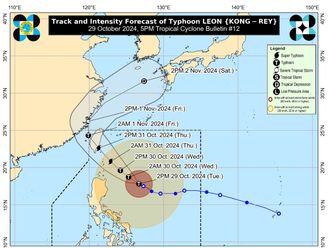Manila: Climate change which has shortened the distance between the occurrence of El Nino (drought) and La Nina (continuous rains) have imperilled already scant Philippine rice production in 2010, a trend which is expected to continue in 2011, the department of agriculture said in a statement.
This could be remedied only by higher rice importation to avoid a shortage.
Unmilled rice or palay production for 2010 was estimated at 16.02 million metric tones, 1.5 per cent below the 16.27 million metric tones output in 2009, the agriculture department said.
It added that harvest area contracted by 3.7 per cent, from 4.53 million hectares in 2009 to 4.37 million hectares in 2010.
"The decrease was mainly brought about by the adverse effects of the El Niño phenomenon that hit the Philippines," said the agriculture department, adding that La Nina or typhoons in nine months that immediately followed a short period of drought in 2010 added to the overall 0.12 per cent contraction of agricultural products, including corn and coconuts.
Coconut is a major export product.
Apart from killing hundreds of people, heavy typhoons, including Megi and Conson which occurred before rice harvest in October 2010, devastated half a million tonnes of rice, the agriculture department said.
Earlier, rice production in 2011 was predicted to rise by 15.4 per cent because of 10 per cent widening of rice farms, but the immediate occurrence of La Nina since end of December 2010, which has been continuing for more than 20 days in southern Luzon, central and southern Philippines, could alter such a rosy prediction.
Since the Philippines is the world's largest rice exporter, the agriculture department has already urged the National Food Authority (NFA) to alter the latter's plan to radically cut rice importation in 2011.
NFA, which imports rice to control price of grain and subsidise poor people's purchase, earlier said that this year's importation will be radically cut because of oversupply in 2010.
Last year, NFA imported 2.13 million tones of rice, despite a regulated cap at 1.5 million tones. Rice is a major staple in the Philippines.
The Philippines used to be a major rice producer in Southeast Asia, but land owners and developers have turned rice farms into housing subdivisions, golf courses, and resorts.












